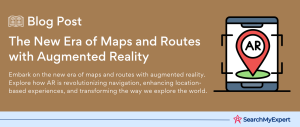AR/VR for Remote Collaboration
New Era of Collaboration
Embracing Remote Collaboration in the Digital Age
The evolution of the workplace has pivoted towards remote collaboration, propelled by technological advancements and global connectivity. This shift, accelerated by recent global events, has underscored the importance of effective remote collaboration in today’s interconnected world.
Recognizing the Shortfalls of Traditional Methods
Traditional remote collaboration tools, predominantly video conferencing, have served as lifelines for communication. Yet, they come with limitations—lack of engagement, miscommunication, and a sense of disconnect. These challenges highlight the need for more immersive and interactive solutions.
AR and VR: The Game-Changers in Remote Collaboration
Augmented Reality (AR) and Virtual Reality (VR) emerge as groundbreaking technologies that promise to revolutionize remote collaboration. By blending digital elements with the real world and creating immersive virtual environments, AR and VR offer more engaging and effective ways to collaborate, breaking the barriers of distance and traditional communication limitations.
Understanding AR and VR – The Future of Immersive Technology
The Distinct Worlds of AR and VR
Augmented Reality (AR) and Virtual Reality (VR) are two sides of the same coin, yet they offer distinct experiences. AR enhances the real world by overlaying digital information onto it, think Pokémon GO or IKEA’s furniture placement app. In contrast, VR transports you to a completely different world, a total immersion experience akin to what you find in Oculus Rift or HTC Vive.
AR and VR Across Industries: A Spectrum of Applications
These technologies have found applications across various sectors:
- Healthcare:
VR for surgical training, AR for patient care visualization. - Education:
AR for interactive textbooks, VR for immersive learning environments. - Retail: AR for trying products virtually, VR for experiencing store layouts.
- Manufacturing:
AR for maintenance assistance, VR for design and prototyping. - Entertainment: AR in gaming and live events, VR for immersive films and games.
Enhancing Collaboration with Immersion and Interaction
The immersive nature of AR and VR sets them apart. They create experiences that are not just seen but felt, making them ideal for collaboration. VR’s immersive environments allow for a shared virtual space, while AR’s ability to overlay information in the real world makes collaborative tasks more interactive and engaging. This immersive and interactive nature leads to more effective and engaging collaboration, overcoming the limitations of traditional methods.
Benefits of AR/VR for Remote Collaboration – Transforming Team Dynamics
Fostering Real-Time Interaction and Enhanced Communication
AR and VR technologies revolutionize communication in remote collaboration. They bring a level of interaction that closely mimics face-to-face meetings. For instance, VR enables users to read body language and pick up on non-verbal cues in a virtual space, fostering a deeper understanding and connection among team members. AR, meanwhile, can augment physical environments with digital overlays, making remote assistance and shared experiences more engaging and effective.
Creating Shared Virtual Environments for Collaborative Work
One of the standout features of AR and VR is the ability to create shared virtual spaces. These spaces are particularly useful for teams working on complex projects. Imagine architects walking through a 3D model of a building, engineers collaborating on a virtual prototype, or doctors discussing a medical procedure using a 3D model. These technologies not only enhance spatial awareness but also enable a level of collaboration that was previously impossible in remote settings.
Streamlining Workflows for Greater Efficiency and Productivity
The efficiency and productivity benefits of AR and VR in remote collaboration are significant. They reduce the need for physical travel, saving time and resources. Complex tasks can be simplified through immersive visualization, leading to faster decision-making and problem-solving. Moreover, these technologies allow for real-time collaboration on digital models or projects, streamlining workflows and enhancing team performance.
Applications of AR/VR in Different Industries – Pioneering New Collaborative Frontiers
Engineering and Manufacturing: Revolutionizing Production and Maintenance
In the world of engineering and manufacturing, AR and VR are proving invaluable. For instance:
- Remote Assistance: AR enables technicians to receive real-time guidance from experts located anywhere in the world, facilitating complex repairs.
- Design Reviews: Teams can collaboratively review and modify 3D models in a VR environment, leading to more informed decision-making.
- Training:
VR simulations provide hands-on experience without the risk or cost associated with real-world training.
Architecture and Construction: Building the Future Virtually
In architecture and construction, these technologies are transforming the way projects are designed and reviewed.
- Collaborative Design:
Teams can design and modify structures collaboratively in a virtual space, regardless of their physical location. - Visualization: VR allows clients and stakeholders to ‘walk’ through a building before it’s built, offering a clearer understanding of the design.
Healthcare: Enhancing Patient Care and Medical Training
AR and VR are making significant inroads in healthcare by:
- Remote Surgery:
Surgeons can collaborate on procedures from different locations using VR, broadening the scope for expert assistance. - Medical Training:
VR provides a safe environment for medical students to practice surgeries and procedures. - Patient Consultations: AR can be used to explain complex medical conditions to patients more effectively.
Education and Training: Learning Beyond the Classroom
In education, AR and VR are opening up new avenues for learning.
- Immersive Learning Experiences: VR offers students immersive experiences that are otherwise impossible, like exploring the solar system.
- Virtual Field Trips: Students can visit historical sites or natural wonders through VR, making education more engaging and accessible.
Challenges and Limitations of AR/VR in Remote Collaboration – Navigating the Hurdles
Technology Accessibility and Cost: The Barrier to Entry
One of the primary challenges in the widespread adoption of AR and VR is their accessibility and cost. High-quality VR headsets and AR equipment can be expensive, limiting their use to organizations with larger budgets. Additionally, the need for powerful computing hardware and high-speed internet connections can be a barrier in regions with limited technological infrastructure.
Cybersecurity and Privacy Concerns: Securing Virtual Spaces
As with any technology that handles data, AR and VR pose cybersecurity and privacy risks. The use of these technologies for remote collaboration involves the transmission of sensitive information, which could be vulnerable to breaches. Ensuring robust security protocols and data encryption is crucial to protect user privacy and confidential information in these virtual environments.
User Acceptance and Comfort: Overcoming Human Hesitancy
Another significant challenge is user acceptance. Some individuals may find it difficult to adapt to AR and VR technologies, especially those not accustomed to digital interfaces. Moreover, prolonged use of VR can lead to discomfort, such as motion sickness or eye strain. Ensuring these technologies are user-friendly and developing guidelines for healthy usage are essential steps in mitigating these issues.
Future Trends and Advancements in AR/VR – Shaping the Next Wave of Collaboration
Haptic Feedback and Sensory Integration: Bridging the Physical-Digital Divide
One of the most exciting future trends in AR and VR is the integration of haptic feedback and other sensory experiences. This technology promises to add a tactile dimension to virtual environments, making interactions feel more realistic. Imagine feeling the texture of a material in a virtual product design or the handshake of a colleague in a virtual meeting. This sensory integration will significantly enhance the realism and immersion of remote collaboration.
Making AR and VR More Accessible and Affordable
As technology evolves, the cost of AR and VR devices is expected to decrease, making them more accessible to a wider audience. This democratization of technology will enable more businesses and individuals to leverage AR and VR for remote collaboration. Additionally, advancements in mobile AR and VR technologies will play a key role in increasing accessibility.
The Rise of Advanced Collaboration Platforms and Tools
The development of more sophisticated collaboration platforms and tools is another key trend. These platforms will offer more seamless integration of AR and VR into everyday work processes, making remote collaboration more efficient and intuitive. Expect to see platforms that combine video conferencing, 3D modeling, and real-time data analytics in a unified virtual space.
Embracing the Future of Remote Collaboration with AR and VR
As we have explored throughout this article, the potential of Augmented Reality (AR) and Virtual Reality (VR) in revolutionizing remote collaboration is immense. These technologies offer a new realm of possibilities for teams working across distances, transcending the limitations of traditional remote collaboration methods.
Key Points of AR and VR in Remote Collaboration:
- Enhanced Communication: AR and VR enable more natural, face-to-face interaction, making remote collaboration more personal and effective.
- Immersive Collaboration:
These technologies offer shared virtual spaces for collaborative work on complex projects, enhancing spatial awareness and teamwork. - Increased Efficiency:
AR and VR streamline workflows, boost productivity, and save time and resources by reducing the need for physical travel. - Diverse Industry Applications: From engineering to healthcare, AR and VR are being adopted across various industries for their collaborative benefits.
- Ongoing Challenges: Despite the promise, challenges like technology accessibility, cybersecurity, and user comfort remain to be addressed.
- Future Trends:
Advances like haptic feedback, improved accessibility, and advanced collaboration tools are set to further enhance the AR and VR experience.
Looking ahead, there is a palpable sense of optimism about the future of AR and VR technologies. Their continued evolution and integration into various fields suggest a future where remote collaboration is not just a necessity but a dynamic, engaging, and productive experience.
Conclusion
Augmented Reality (AR) and Virtual Reality (VR) are revolutionizing remote collaboration, offering more natural and immersive interactions than traditional methods. These technologies enhance communication, collaboration efficiency, and are applicable across various industries. Despite challenges like accessibility and user comfort, the future of AR and VR is promising, with advancements like haptic feedback enhancing the experience. Embracing AR and VR opens up new possibilities for effective and engaging remote teamwork.
Create immersive experiences with our AR & VR Development Service Company.
Table of Contents
Toggle






